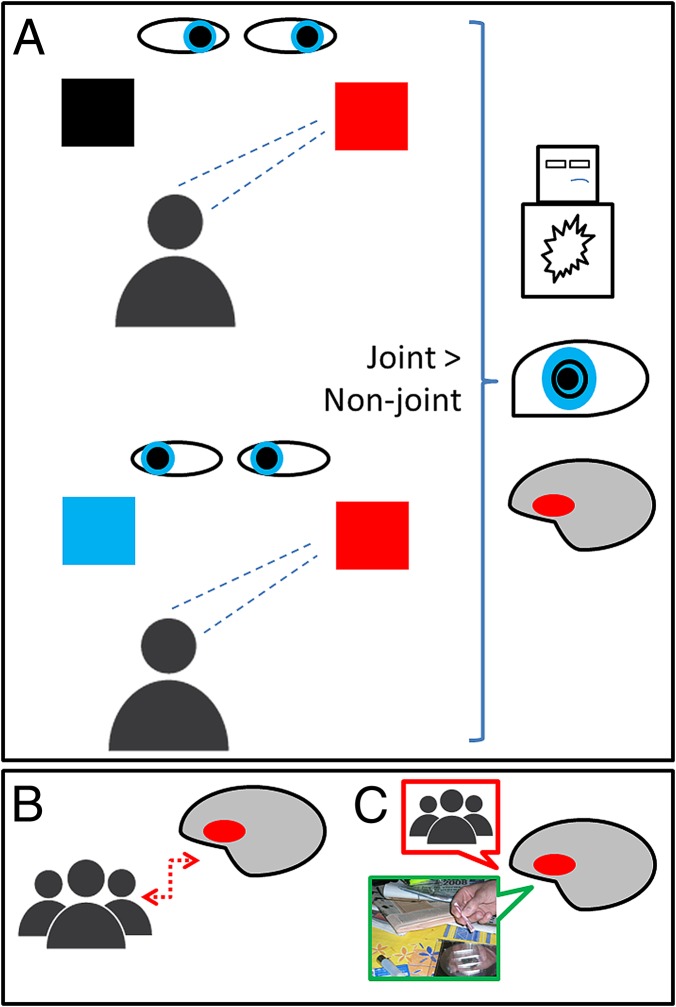Fig. 1.
(A) (Left) Main conditions of the social gaze task: joint attention (the participant and the avatar direct gaze in the same direction) and nonjoint attention (the participant and the avatar direct gaze in opposite directions). (Right) Cocaine users, compared with controls, showed blunted emotional response to joint vs. nonjoint attention, as manifested across multimodal measures: subjective ratings (flattened pleasantness scores on manikin analog scales), bodily indices (narrowed changes in pupil size), and brain signal (reduced orbitofrontal cortex activation). Cocaine users also experienced abnormally increased arousal (represented in the manikin’s body) to joint relative to nonjoint attention. (B) Correlation between orbitofrontal cortex signal to joint vs. nonjoint attention and the size of participants’ real-life social networks. (C) Different value representations feedback orbitofrontal cortex decision-making systems. In cocaine users, blunted representations of social reward (red callout) coupled with heightened representations of drug reward (green callout) may persistently bias decision-making systems toward cocaine use.

